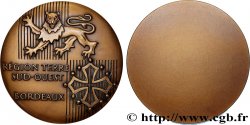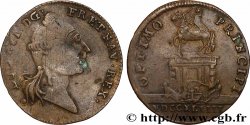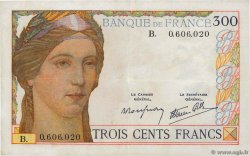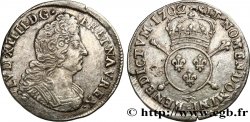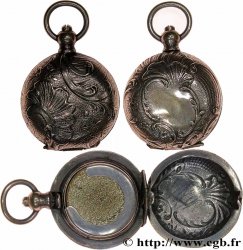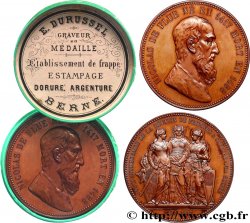Live auction - fjt_234520 - BORDEAUX Jeton de l’Ormée au Lys 1653
Devi Sign-in ed essere un offerente approvato fare un'offerta, Login per fare offerte. Conti sono soggetti ad approvazione e di approvazione sono raggiunti entro 48 ore. Non aspettare fino al giorno di una vendita si chiude per registrarti.Confermando la tua offerta su questo oggetto ti impegni ad un contratto legalmente vincolante per l'acquisto di questo prodotto e fare clic su «offerta» costituisce accettazione dei termini di utilizzo de live auctions cgb.fr.
Offerta deve essere collocato in euro gli importi interi vendita only.The si chiuderà al momento sulla descrizione dell'oggetto, eventuali offerte pervenute al sito dopo l'orario di chiusura non verranno eseguite. Volte transmition possono variare e le offerte potrebbero essere respinto se si attende per gli ultimi secondi. Per ulteriori informazioni ckeck le FAQ Live auction.
Le offerte vincenti saranno sottomesse ai 18% per spese di compartecipazione alla vendita.
Le offerte vincenti saranno sottomesse ai 18% per spese di compartecipazione alla vendita.
| Valutazione : | 2 500 € |
| Prezzo : | no offerta |
| Offerta maxima : | no offerta |
| Data di fine vendita : | 01 marzo 2016 18:15:28 |
Tipo : Jeton de l’Ormée au Lys
Data: 1653
Metallo : argento
Diametro : 27 mm
Asse di coniazione : 6 h.
Peso : 6,65 g.
Orlo : lisse
Grado di rarità : R3
Commenti sullo stato di conservazione:
Patine foncée au droit
N° nelle opere di riferimento :
Diritto
Titolatura diritto : I. B. THODIAS. H. DVBOVRDIEV. I. LARCEBAVT. P. ROBERT. I. VRIGNON. IVRATS..
Descrittivo diritto : Armes de Bordeaux.
Rovescio
Titolatura rovescio : SPES ALTERA 1653.
Descrittivo rovescio : Un lys en fleur avec un bouton entrouvert à droite et un bouton fermé à gauche.
Traduzione rovescio : Une autre espérance.
Commento
Les explications données par Michel Carde sur l’importance et la rareté de ce jeton sont impressionnantes et reprennent pour l’essentiel le travail cité de P. Fourché (Les jetons de l’Ormée, Bordeaux, 1903.
Celui-ci replace ces jetons dans le contexte de la fin de la Fronde dont Bordeaux fut une place forte.
Par exemple son interprétation du revers de notre jeton est que le lys épanoui représente le Prince de Condé, le bouton qui s’entrouvre est le jeune duc d’Enghien alors âgé de dix ans ; le bouton fermé c’est l’enfant que porte la duchesse et qui justifie la légende “Spes altera”, Une autre espérance.
Thodias, Dubourdieu, Larcebaut, Robert et Vrignon sont des Jurats de Bordeaux membres d’une confrérie, la Frérie de l’Ormée.
On peut supposer que l’extrême rareté actuelle de ces jetons vient de l’échec de la Fronde qui encouragea les détenteurs de ces jetons séditieux à les porter massivement à la refonte.
The explanations given by Michel Carde on the importance and rarity of this token are impressive and essentially repeat the cited work of P. Fourché (Les jetons de l'Ormée, Bordeaux, 1903). He places these tokens in the context of the end of the Fronde, of which Bordeaux was a stronghold. For example, his interpretation of the reverse of our token is that the blooming lily represents the Prince of Condé, the bud that is half-opening is the young Duke of Enghien, then ten years old; the closed bud is the child carried by the Duchess and which justifies the legend “Spes altera”, Another hope. Thodias, Dubourdieu, Larcebaut, Robert and Vrignon are Jurats of Bordeaux members of a brotherhood, the Frérie de l'Ormée. We can assume that the current extreme rarity of these tokens comes from the failure of the Fronde which encouraged the holders of these seditious tokens to massively carry out the overhaul
Celui-ci replace ces jetons dans le contexte de la fin de la Fronde dont Bordeaux fut une place forte.
Par exemple son interprétation du revers de notre jeton est que le lys épanoui représente le Prince de Condé, le bouton qui s’entrouvre est le jeune duc d’Enghien alors âgé de dix ans ; le bouton fermé c’est l’enfant que porte la duchesse et qui justifie la légende “Spes altera”, Une autre espérance.
Thodias, Dubourdieu, Larcebaut, Robert et Vrignon sont des Jurats de Bordeaux membres d’une confrérie, la Frérie de l’Ormée.
On peut supposer que l’extrême rareté actuelle de ces jetons vient de l’échec de la Fronde qui encouragea les détenteurs de ces jetons séditieux à les porter massivement à la refonte.
The explanations given by Michel Carde on the importance and rarity of this token are impressive and essentially repeat the cited work of P. Fourché (Les jetons de l'Ormée, Bordeaux, 1903). He places these tokens in the context of the end of the Fronde, of which Bordeaux was a stronghold. For example, his interpretation of the reverse of our token is that the blooming lily represents the Prince of Condé, the bud that is half-opening is the young Duke of Enghien, then ten years old; the closed bud is the child carried by the Duchess and which justifies the legend “Spes altera”, Another hope. Thodias, Dubourdieu, Larcebaut, Robert and Vrignon are Jurats of Bordeaux members of a brotherhood, the Frérie de l'Ormée. We can assume that the current extreme rarity of these tokens comes from the failure of the Fronde which encouraged the holders of these seditious tokens to massively carry out the overhaul







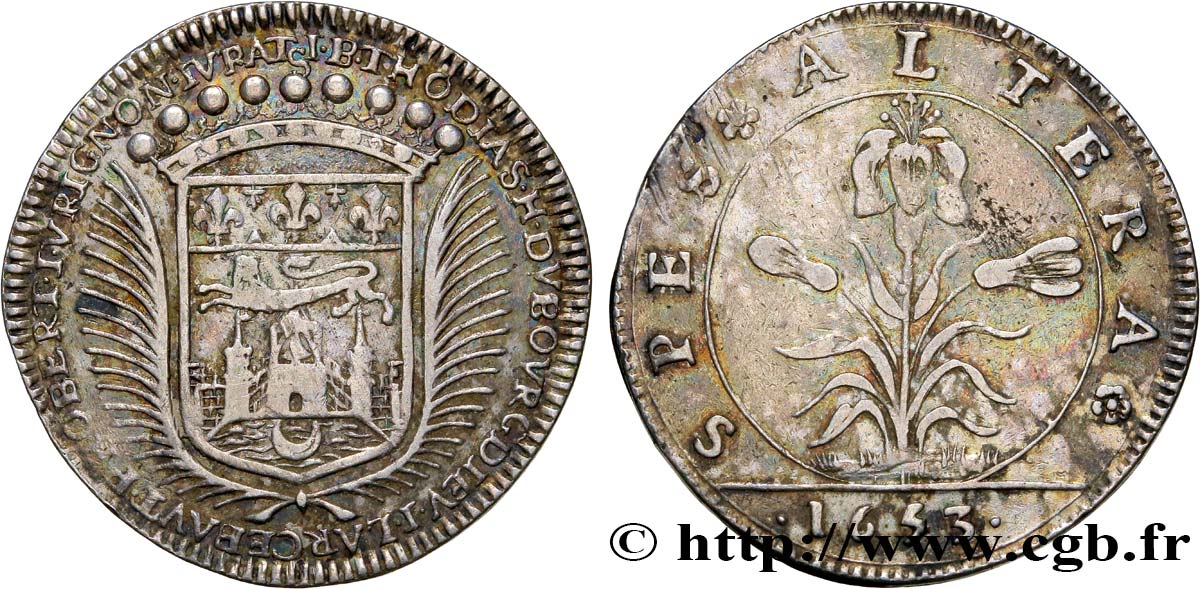
 Segnalare un errore
Segnalare un errore Stampate la pagina
Stampate la pagina Condividi mia selezione
Condividi mia selezione Fai una domanda
Fai una domanda Consegnare / vendere
Consegnare / vendere
 Descrittivo
Descrittivo


